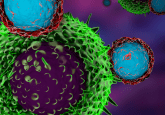Is minimal residual disease a convincing tool to determine the treatment duration of immune checkpoint inhibitors?
The treatment armamentarium of cancer has evolved tremendously in the last decades with the concept of targeted drugs . Immune checkpoint inhibitors (ICI) is a targeted treatment that deactivates the tumor-induced inhibition of the immune system . Unfortunately, ICI are administered continuously until disease progression or occurrence of limiting toxicity in view of the absence of data that specifies the length of ICI administration. The toxicity profile of ICI depends on the type of inhibitor used. The toxicities of CTLA-4 inhibitors are expected as early as 3 weeks after treatment initiation while that of the PD-1/PDL-1 inhibitors occur later starting 6 weeks after the first dose. The number and severity of these toxicities seem to escalate with time . Effectively, the earliest adverse events are limited to pruritus and rash . Thereafter, more serious toxicities follow including colitis, endocrinopathies, pneumonitis and renal failures. The available data do not describe a cumulative toxicity with the prolonged administration of ICI . However, one should keep in mind the potential occurrence of cytokine release syndrome and severe financial toxicities with the prolonged treatment durations. In this editorial, we highlight the unanswered questions concerning the duration, toxicity and gauging efficacy of ICI based on the limited publications available.
Click here to read the full article in Future Oncology.


